| Weak La Niña Expected to Continue into the Upcoming Winter |
||
The outlook from the Climate Prediction Center for the upcoming winter of 2025-26 is saying that weak La Niña conditions are favored to continue into winter with ENSO Neutral conditions returning by next spring. Based on this the overall forecast for West Central and Southwest Florida for the upcoming winter (December, January, and February) is below. West Central and Southwest Florida Winter 2025-26 Outlook:
|
||
Most images on this page can be magnified by left clicking, and resized back to original size with a second left click. |
CPC Outlook for Winter 2025-26: |
||
This year, La Niña is favored to continue as we head into winter and the Climate Prediction Center Winter Outlook graphics below indicate a pretty typical La Niña pattern is expected across the United States. Warmer than normal temperatures and near to below normal rainfall is forecast across much of the southern and eastern continental U.S., whereas the U.S. northwest and north central tier of states—from Washington to the western Great Lakes—looks cooler than normal with wetter than normal across the northwest U.S. into the Great Lakes and Ohio Valley. |
||
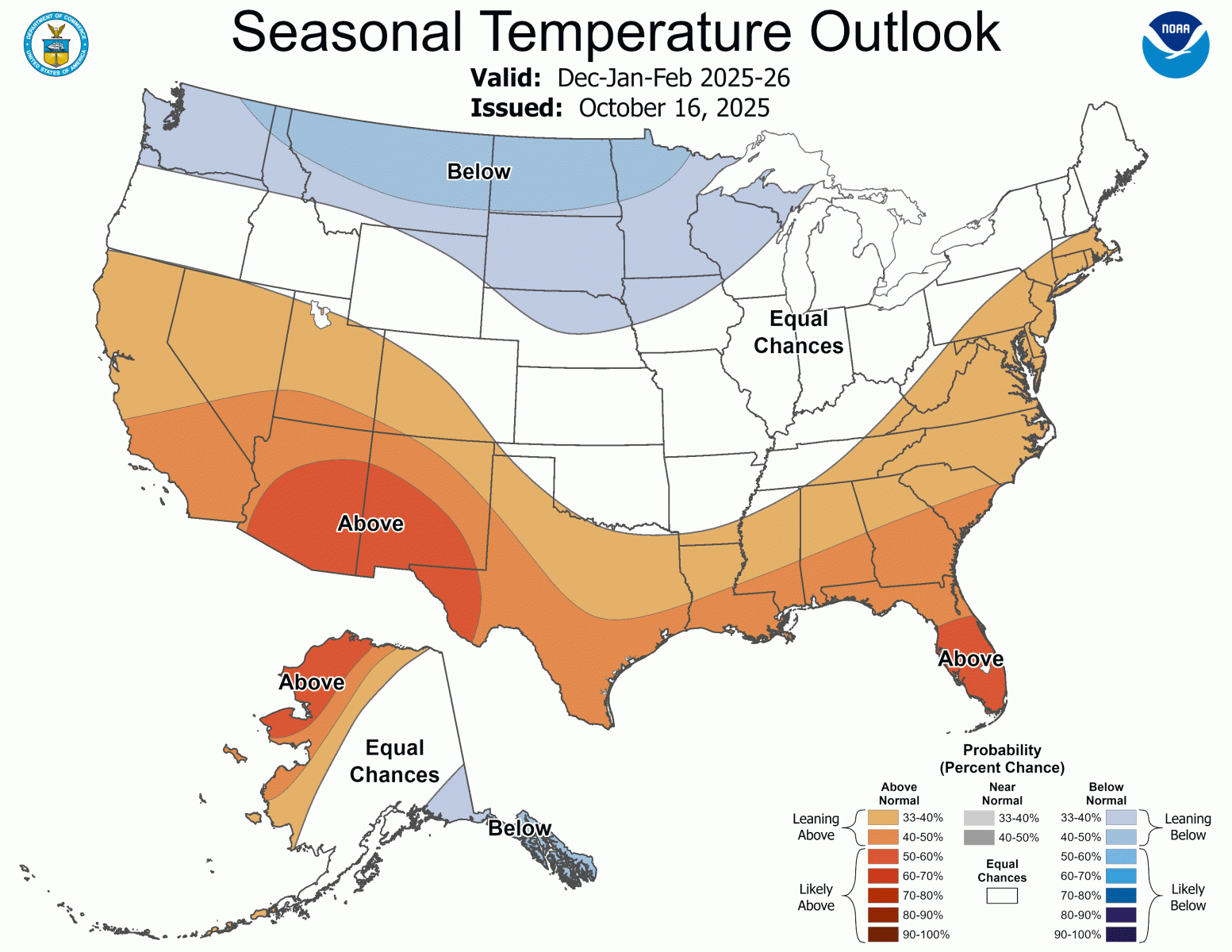 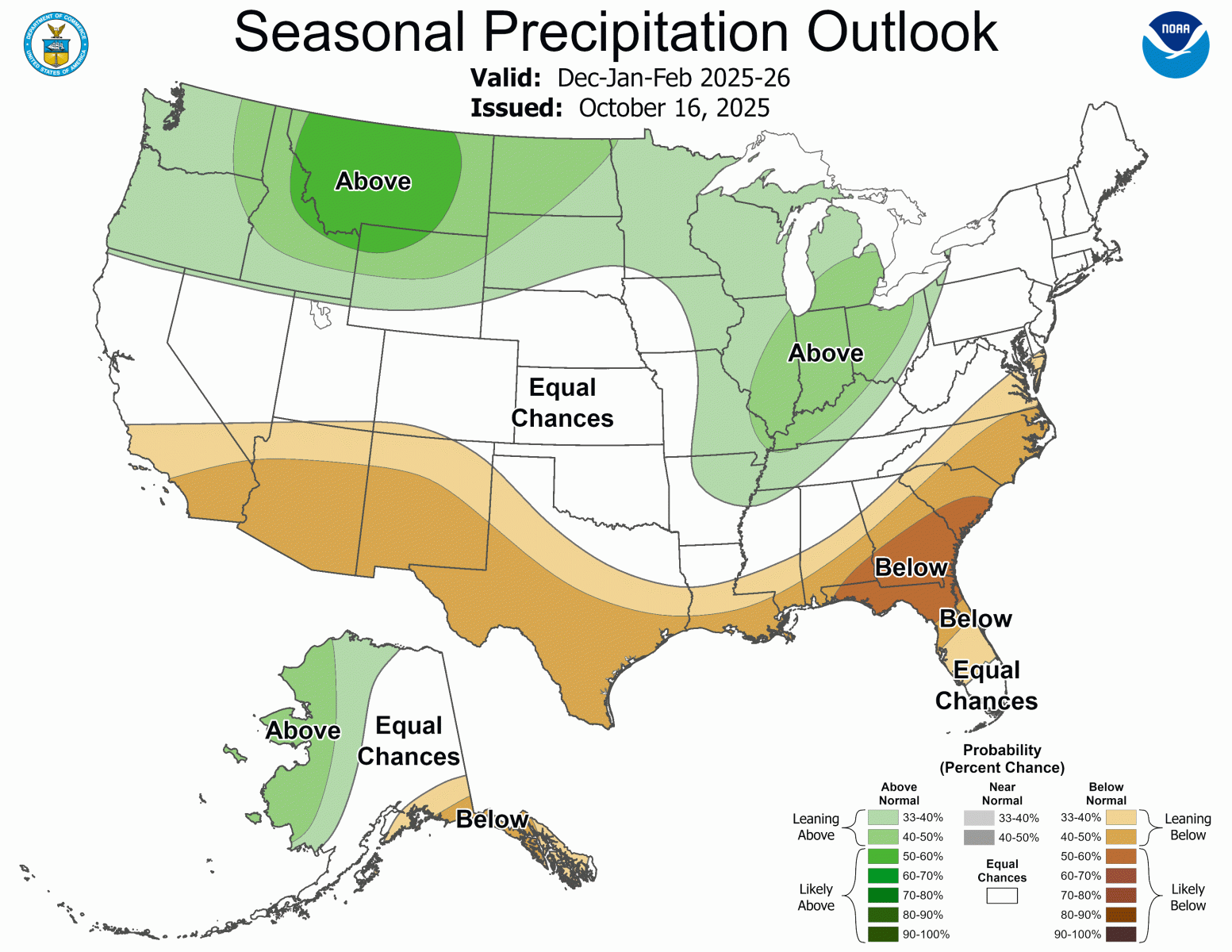  |
||
ENSO State: |
||
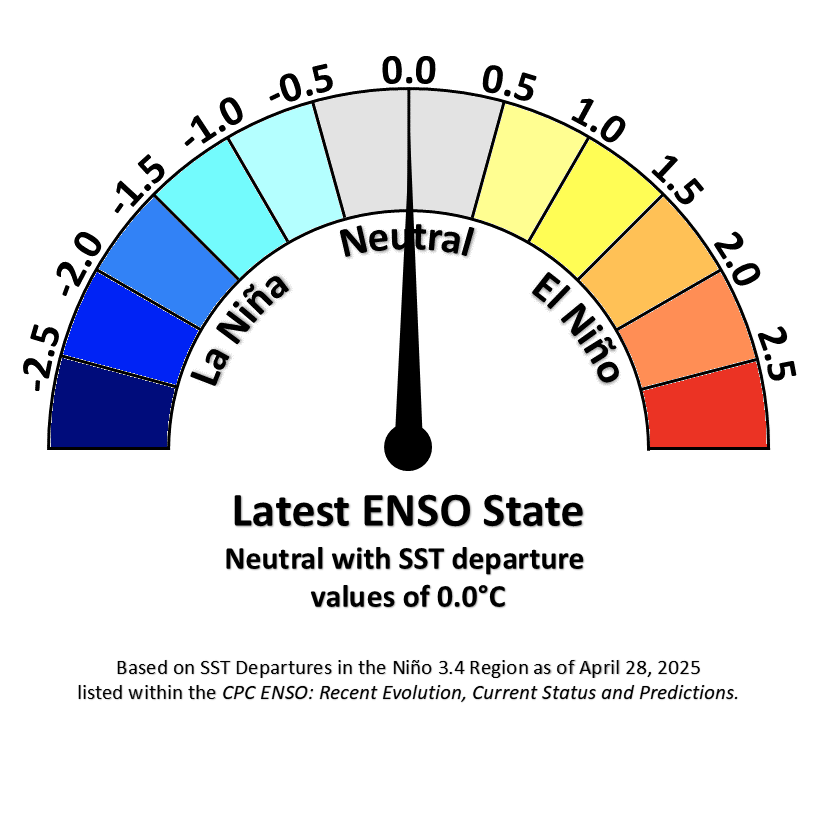 ENSO Phase Meter |
 Tropical Pacific SST Anomalies |
|
Link to CPC ENSO: Recent Evolution, Current Status and Predictions |
||
| What is ENSO? El Niño and La Niña are the warm and cool phases of a recurring climate pattern across the tropical Pacific—the El Niño-Southern Oscillation, or “ENSO” for short. The pattern shifts back and forth irregularly every two to seven years, bringing predictable shifts in ocean surface temperature and disrupting the wind and rainfall patterns across the tropics. These changes have a cascade of global side effects. |
 ENSO Cross Section over Pacific Ocean |
|
Though ENSO is a single climate phenomenon, it has three states, or phases, it can be in. The two opposite phases, “El Niño” and “La Niña”, require certain changes in both the ocean and the atmosphere because ENSO is a coupled climate phenomenon. “Neutral” is in the middle of the continuum. |
||
|
||
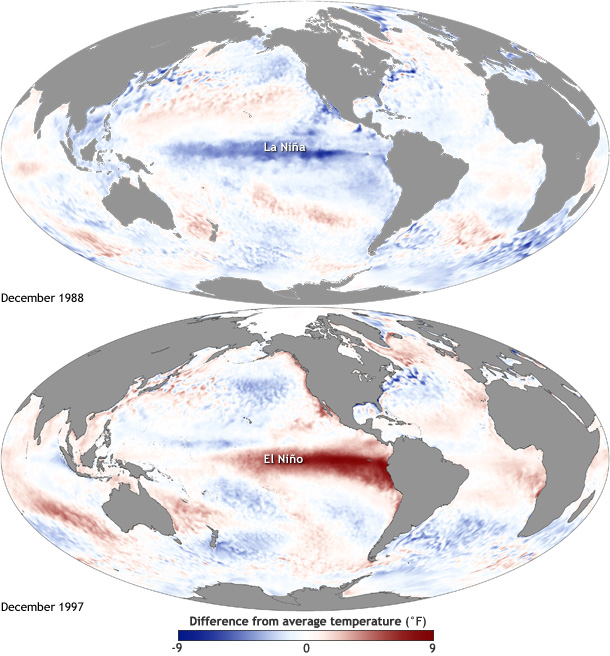 ENSO Sea Surface Temperature Anomalies |
||
So what is the criteria for an “El Niño” or “La Niña” to be declared officially? |
||
El Niño criteria: |
||
|
||
 El Niño Flow Chart |
||
La Niña criteria: |
||
|
||
ENSO Regions: |
||
Location of the parts of the tropical Pacific used for monitoring sea surface temperature. As noted in the above criteria the Niño 3.4 region (red box in graphic below) is the area monitored to determine the ENSO phase. |
||
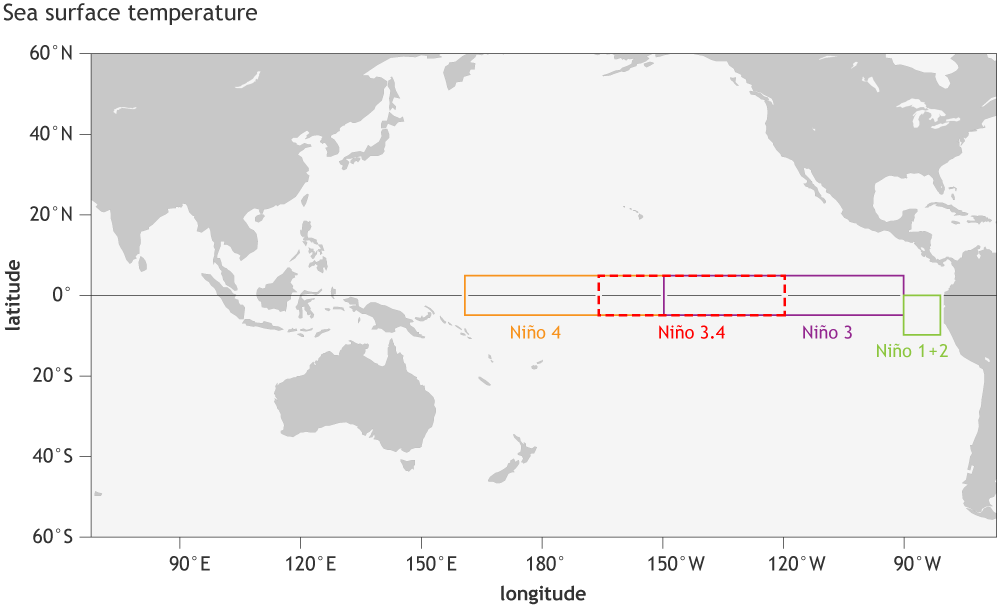 ENSO Regions |
||
Other climate patterns, such as the Madden-Julian Oscillation can also play a role in determining winter weather. |
||
ENSO History: |
|||||||||||||||||||||
We had Neutral ENSO conditions last winter with temperatures averaging slightly below to slightly above normal, while rainfall was below normal (more details can be found here.) Before this, a strong El Niño occurred during the winter of 2023-24, with La Niña conditions existing during the previous three winters. Following is a graph of the Oceanic Niño Index (ONI) 3 month running mean of ERSST.v5 SST anomalies in the Niño 3.4 region (5°N-5°S, 120°-170°W) and below this are U.S. maps of the Winter (December-February) departure from average precipitation and temperature for each category of El Niño and La Niña since 1950. |
|||||||||||||||||||||
|
|||||||||||||||||||||
ENSO Local Temperature: |
|||||||||||||||||||||||||||||||||||||||||||||||||||||||||||||||||||||||||||||||||
|
|||||||||||||||||||||||||||||||||||||||||||||||||||||||||||||||||||||||||||||||||
|
|||||||||||||||||||||||||||||||||||||||||||||||||||||||||||||||||||||||||||||||||
Another way to see this is by viewing the Box and Whisker Distribution Plots* for the three climate zones across the Florida peninsula shown below: |
|||||||||||||||||||||||||||||||||||||||||||||||||||||||||||||||||||||||||||||||||
|
|||||||||||||||||||||||||||||||||||||||||||||||||||||||||||||||||||||||||||||||||
ENSO Local Rainfall: |
|||||||||||||||||||||||||||||||||||||||||||||||||||||||||||||||||||||||||||||||||
|
|||||||||||||||||||||||||||||||||||||||||||||||||||||||||||||||||||||||||||||||||
|
|||||||||||||||||||||||||||||||||||||||||||||||||||||||||||||||||||||||||||||||||
Another way to see this is by viewing the Box and Whisker Distribution Plots* for the three climate zones across the Florida peninsula shown below: |
|||||||||||||||||||||||||||||||||||||||||||||||||||||||||||||||||||||||||||||||||
|
|||||||||||||||||||||||||||||||||||||||||||||||||||||||||||||||||||||||||||||||||
ENSO Local Severe Weather: |
||||||
During the El Niño phase of the ENSO, especially a Strong El Niño, there tends to be more stormy conditions across the Florida peninsula during the winter and early spring. Cold fronts will move across the region and with the jet stream further south and stronger we tend to see a higher number of severe weather events. When we look at the data since the winter of 1969-70, we see that Strong El Niño events have more than double the number of severe weather events (tornadoes, severe wind, and severe hail) than the other ENSO categories across our county warning area. On a side note, there is data available back in the 1950's and 1960's, but the number of reports is very low and unrepresentative. |
Graph Legend 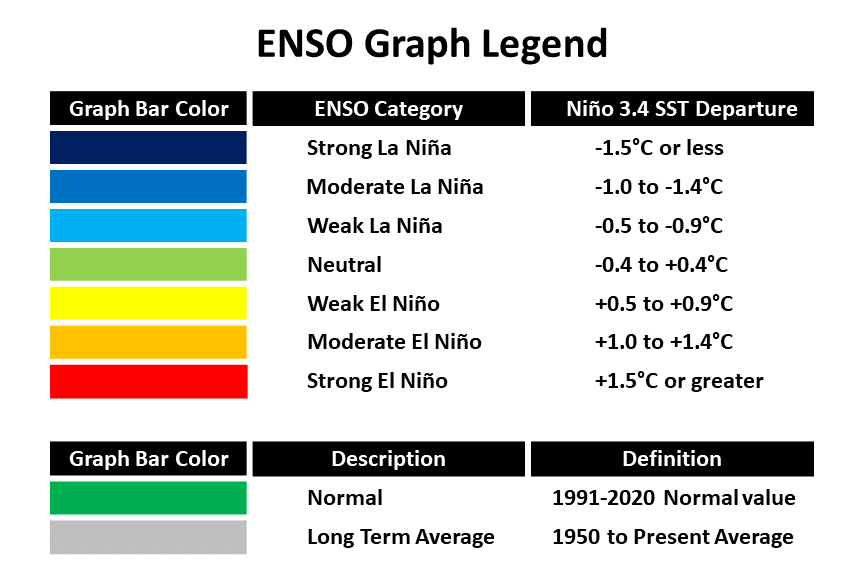 |
NWS Tampa Bay County Warning Area  |
||||
 |
||||||
Tornadoes: |
||||||
|
||||||
Severe Wind: |
||||||
|
||||||
Severe Hail: |
||||||
|
||||||
ENSO Local Freezes: |
|||||||||||||||||||||||||||||||||||||||
|
|||||||||||||||||||||||||||||||||||||||
|
|||||||||||||||||||||||||||||||||||||||
ENSO Local Sky Cover: |
||||||||||||
|
||||||||||||